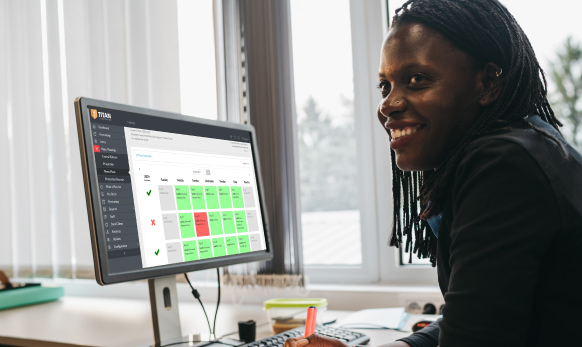How can I keep my nutrition program strategy on track?
Have you ever spent a morning putting out fires that rob you and your team of the time they need to plan and serve nutritious, delicious meals? Interruptions such as:
- A broken link in the supply chain disrupts inventory management
- A last-minute menu change means manually updating the options
- A flood of calls from parents with questions about their applications
- A delay in the first lunch period that rippled through subsequent service
Instead of waiting for their luck to run out in their school nutrition program, thousands of districts are solving problems before they occur – and avoiding associated cost overruns and wasted staff time – with scalable, user-friendly nutrition software.
Such a solution reliably integrates processes from inventory management to point-of-service tracking. It also enables them to automate tasks that tax short-handed staff. Best of all, it creates time to organize, prepare, and serve wholesome food that students are excited to eat.
How can I get more done with fewer staff?
Finding high-performing staff is not a new problem or restricted to school nutrition programs. During the pandemic, the business world called the unprecedented exodus of good workers “The Great Resignation.”
Just as businesses are adopting advanced data solutions to manage repetitive, tedious tasks, short-staffed schools and districts are adopting intuitive technology to take over routine work – a proven way to boost morale and keep good staff on board.
What can K‑12 nutrition software do for me in my day-to-day tasks?
TITAN, a LINQ solution, for instance, frees up staff time by completing strategy-critical tasks such as:
- Inventory Management. Order exactly what you need when you need it. Automating inventory and future needs eliminates manual, error-prone data entry. Your school or district operations can easily manage inventory and distribution to keep costs within budget.
- Menu Planning. Instead of relying on clunky, redundant manual data entry, advanced nutrition software provides staff with single-screen access that streamlines meal pattern planning, nutritional analysis, and data on reimbursable meals. The software also enables you to update menus in real-time and publish them digitally.
- Application Processes. A “perfect storm” threatens to overwhelm schools and districts when the USDA Federal Waivers expire in September. About 21 million students took advantage of the application waivers for free and reduced-cost meals during the pandemic. The waiver expiration, combined with difficult economic conditions and snarled supply chains, likely will produce a flood of new applications. If that happens, which do you want to rely on: Luck, or an all-in-one tool that selects applications, sends notifications, manages responses, and generates data-rich reports?
- Accelerate Meal Service. Online ordering lets you get more meals to more students in less time. On-campus or remote learners can order ahead and pick up when convenient instead of waiting in line. This saves teaching time by allowing educators to request service anywhere, anytime, for their students.
- Enjoy POS Flexibility. Customize and configure point-of-service screens with drag-and-drop ease. Front-of-house software for school nutrition programs that is nimble, responsive, and creates greater efficiency, helps keep the focus on serving students and supporting families regardless of what comes up.
By automating these and other food-service processes, schools and districts are transforming nutrition programs to save lost hours and gain peace of mind from knowing they’ve safeguarded their strategy against unforeseen breakdowns.
What does a K‑12 nutrition strategy look like with advanced software?
When you don’t have to contend with routine tasks or worry about problems with your legacy system, you and your team are able to do what you do best: provide the nutritional fuel that powers learning.
A robust platform that simplifies food service operations should also support your strategy by providing:
- Direct access to registered dieticians who will assist in preparing menus and ensure they meet compliance standards.
- Open access to ADA standards and continuous monitoring to confirm the platform complies with standards.
- Family websites that keep parents and guardians informed with up-to-date information about menu changes, payments, and scheduling meal delivery for remote learners.
There is a lot to consider. Get a free e-guide that will lead you through the process of finding the right K‑12 school nutrition software and maximizing the return on an investment that will help you efficiently feed more students.
